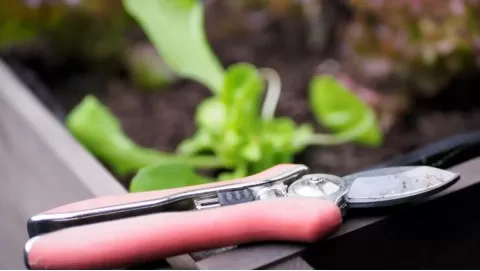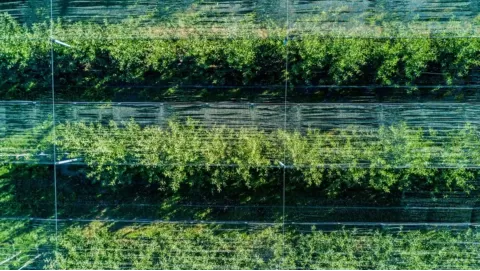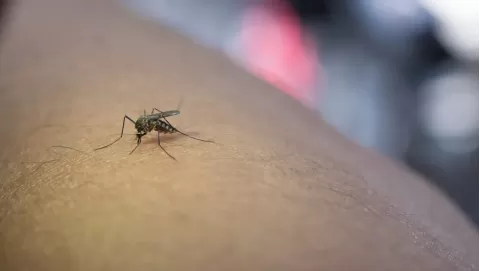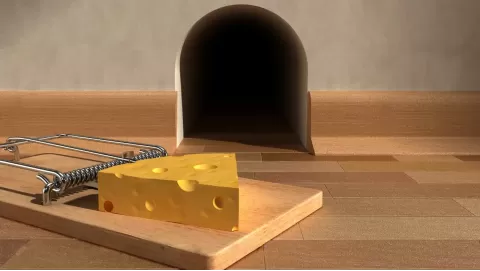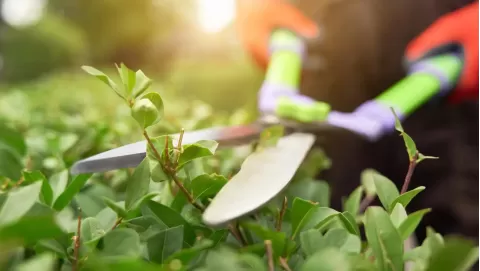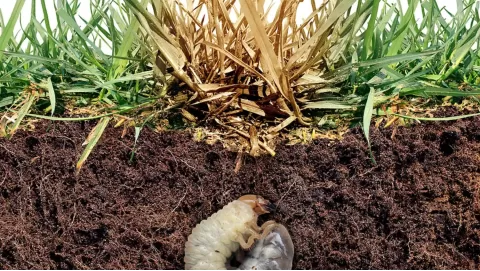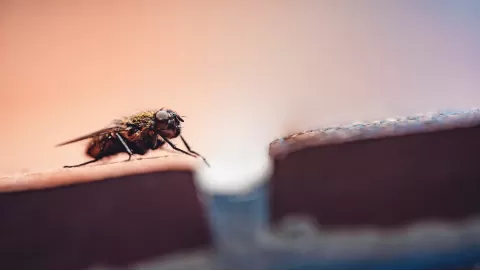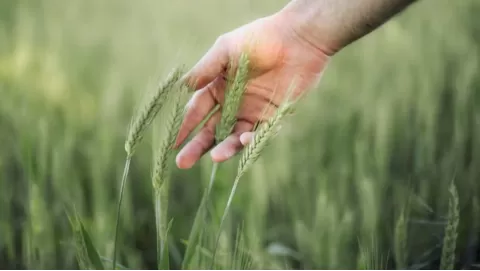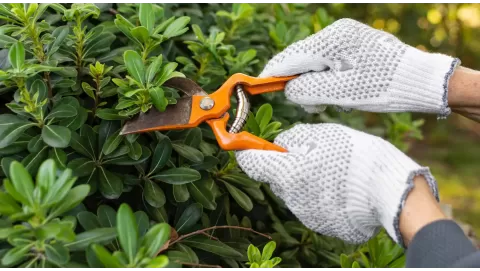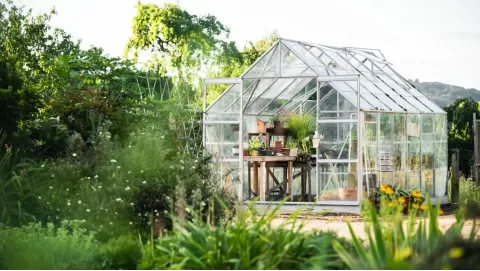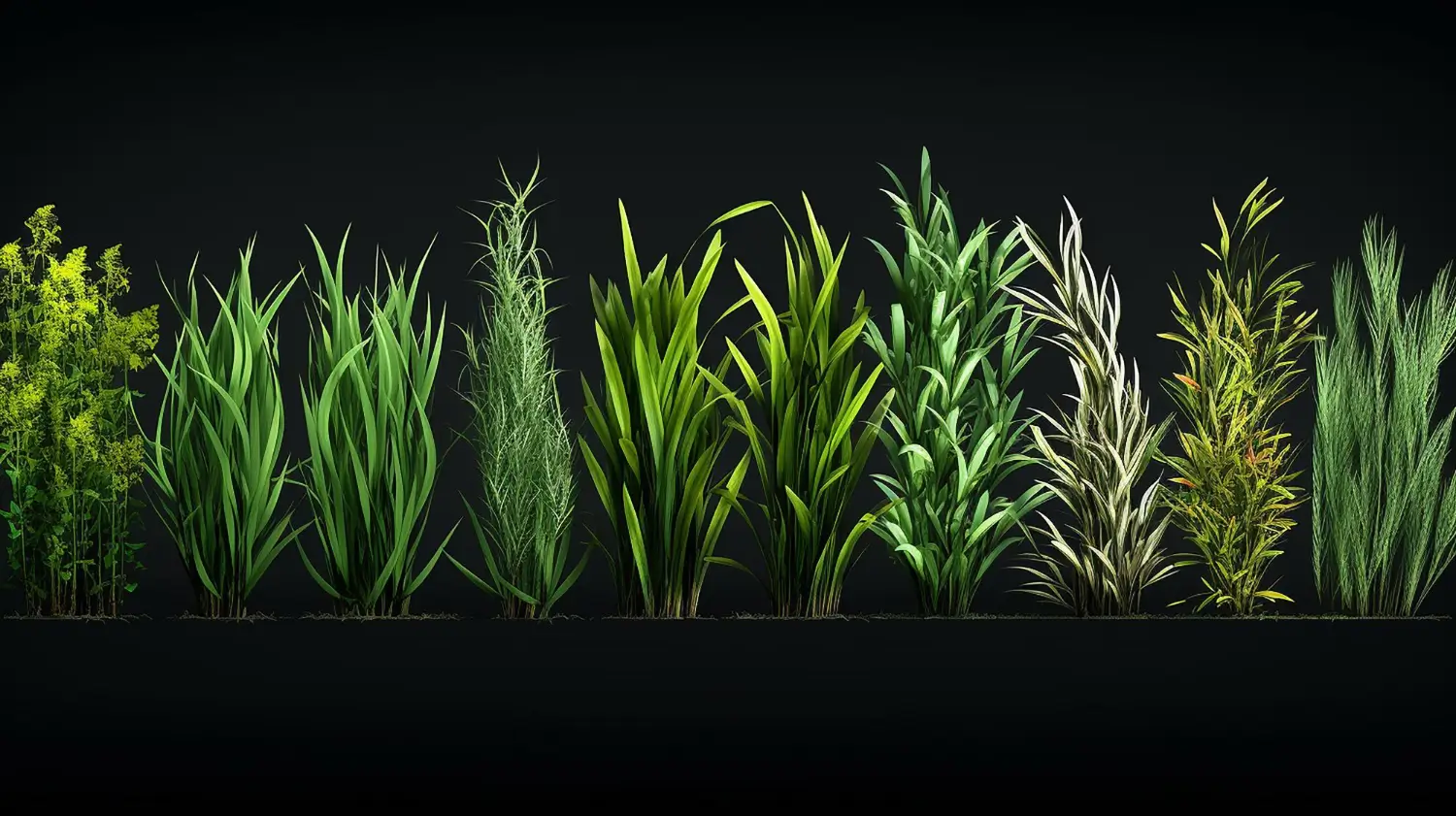
5 main types of grass and how to care for them
In relation to the growing conditions, you can classify the grasses into two main groups – cool-season grasses and warm-season grasses. Understand the pros and cons of each, so you can choose what type of grass will work best for your area and how you plan to maintain it.
Cool-Season Grasses
These lawns grow best in cooler temperatures and will remain greener longer in spring and fall when temperatures are cooler.
1. Kentucky Bluegrass
- Characteristics: It has a fine texture and grows a heavy, dark green, luscious lawn. It’s famous for its miracle ability to self-heal through its rhizomes.
- Best for: Cooler summers, colder winters — such as in Northern states.
2. Tall Fescue
- Characteristics: Coarse, wide blades, and deep roots that allow it to endure heat and drought. Headwater systems that experience temperature change are suitable.
- Best for: Transition zones with a cool season and a warm season.
3. Fine Fescue
- Characteristics: Thin leaves, shade-loving, not very water- or nutrient-hungry. Although some maintenance is required, it does not need as much as other grasses.
- Best for: Shady lawns, cooler climates, and mixed lawns with other grasses.
4. Perennial Ryegrass
- Characteristics: Fine texture, fast growing, more for an outdoor hobby. It germinates quickly and is lightweight, making it ideal for overseeding and filling in patchy spots.
- Best for: Cool climates with cool winters and moderate summers, or overseeding of warm-season varieties in winter.
Warm-Season Grasses
They are warm-climate grasses and grow most during the summer. In the winter, they become dormant.
1. Bermudagrass
- Characteristics: Strong, aggressive, stiff, very good heat and drought tolerance. Often used in sports fields, when the sun is on the lawn.
- Best for: Warm, sunny spots with limited shade.
2. Zoysia Grass
- Characteristics: Plant in mass, compact, very good heat and drought tolerance. It’s slow-growing, but it yields a soft and durable turf.
- Best for: Warm regions with hot summers and mild winters; widely used in home lawns.
3. St. Augustine Grass
- Characteristics: The big sword like rough blades that do the best in warm, coastal locations. It is partially shade-tolerant but likes to be watered.
- Best for: Humid locations, particularly on the coast or in hot, dappled shade.
4. Centipede Grass
- Characteristics: Low-maintenance; slow-growing grass tolerates acidic soil. It is resistant to heat but not drought.
- Best for: Southeastern U.S., where it’s warm and there are acidic, sandy soils.
5. Buffalograss
- Characteristics: Low spreading and drought tolerant, works well in arid climates. It needs very little care and little water.
- Best for: Dry, hot climates like those in the western U.S., especially where water is a concern.
Transition Zone Grasses
In areas where both summer and winter are mild (the transition zone), you need grasses that can handle such weather. Some of the native grasses for this zone are:
- Tall Fescue (cool-season)
- Zoysia Grass (warm-season)
- Bermudagrass (warm-season)
How to Choose the Right Grass Type for a Beautiful, Healthy Lawn
What type of grass seed you should sow is going to be determined by your climate, what type of soil you have, and how you’d like to use your lawn. Kentucky Bluegrass and Tall Fescue are best for cooler climates, while Bermudagrass likes warmer climates — so does St. Augustine Grass. For the transition zone, a fescue blend will keep your lawn looking nice year-round.
You’ll learn about five of the most popular types of grass — Tall Fescue, Annual Ryegrass, Perennial Ryegrass, Kentucky Bluegrass and Fine Fescue — and lawn care tips for each so you can decide which might be the best fit for you.
1. Tall Fescue
Overview: Tall Fescue is a cool season grass with excellent shade tolerance, makes the best product for areas of your lawn where fescue is the only choice. It’s famed for its hardiness in heat and dry weather, and its deep roots help it stay green in tough conditions.
Lawn Care Tips:
- Mowing: Maintain grass height at 2-½ to 4 inches. Taller would add some deep roots to impart drought tolerance.
- Watering: An inch to 1.5 inches weekly, with the help of rain. Water deeply and infrequently to promote deep root growth.
- Fertilizing: Feed your plant twice a year, once in the autumn and then in the spring, with a general-purpose fertilizer. Feed it sparingly with a slow-release, nitrogen fertilizer to encourage growth.
- Overseeding: Go ahead and begin to overseed in the fall to maintain a thick, lush look to your lawn. It is great for adding more to any thin or balding areas, also.
- Pest and Disease Management: Keep an eye out for brown patch in higher-humidity regions this month. Fungicides can occasionally be necessary to suppress severe infections.
2. Annual Ryegrass
Overview: Annual Ryegrass is a fantastic cover crop that is often used in cooler seasons for temporary cover as well as for quick establishment. It sprouts up and grows fast, but fades quickly as the summer heat overtakes it. It’s commonly applied for overseeding warm-season grass in the dead of winter.
Lawn Care Tips:
- Mowing: Mow Annual Ryegrass down to 1.5 inches- 2.5 inches. Thickening the grasses is encouraged by regular mowing.
- Watering: Maintain moist soil during germination; during establishment, water 1 inch per week.
- Fertilizing: Feed with a well-balanced fertilizer every four to six weeks. Annual Ryegrass is also a heavy feeder.
- Overseeding: If you want to have a green lawn in cooler months, then it needs to be overseeded every year.
Pest and Disease Management: It’s relatively resistant to pests but can develop rust if the grass remains too wet.
3. Perennial Ryegrass
Overview: Perennial Ryegrass is a cool-season grass and is widely known for its winter-hardiness and its ability to withstand high traffic. It is unique among the annual rye grasses in that it will survive more than one growing season under the proper conditions. It's frequently mixed with other grasses to form robust lawns.
Lawn Care Tips:
- Mowing: Keep the grass at between 1.5 and 2.5 inches. A lawn that is mown regularly is thicker and has less disease.
- Watering: Water 1 inch a week. This variety of Ryegrass performs best with consistent moisture but can become water stressed in prolonged dry periods.
- Fertilizing: Fertilize in early fall and again in late spring for best growth. High nitrogen, balanced fertilizer is your friend.
- Overseeding: Plant the seed in the fall or the spring and grow a thick, lush yard, especially in high-traffic areas.
- Pest and Disease Management: Watch for rust and brown patch. Disease pressure will be lessened by regular watering and no over-fertilization.
4. Kentucky Bluegrass
Overview: Kentucky Bluegrass is by far the most popular cool-season grass of the cool-season grasses. It is a spreader that travels via rhizomes, and it grows quickly enough that it can recover nicely from damage and fill in “bald” areas. But it is not especially drought-tolerant and may go dormant in dry conditions.
Lawn Care Tips:
- Mowing: Keep grass height at 2 to 3 inches. Regular mowing will prevent the buildup of thatch and keep the lawn tidy.
- Watering: Bluegrass needs approximately 1 - 1.5 inches of water a week. It goes dormant when dry, but generally greens up with moisture.
- Fertilizing: Feed early in the fall and late in spring. Fertilization Kentucky Bluegrass Heavy feeder – apply nitrogen-rich fertilizer for lush green growth.
- Overseeding: Over-seed in the autumn to maintain the thickness of the grass, especially in thin or bare areas.
- Pest and Disease Management: Keep an eye out for grubs and powdery mildew. When well-maintained (mowed short and watered), disease is reduced.
5. Fine Fescue
Overview: Fine Fescue includes types of grasses, including Creeping Red Fescue, Hard Fescue, Sheep Fescue, and Chewings Fescue. They are highly shade-tolerant and grow well in impoverished soils. Fine Fescue has narrow, fine blades and requires less water and fertilizer than other cool-season grasses.
Lawn Care Tips:
- Mowing: Keep grass at a height of 1.5 to 3 inches. Fine Fescue doesn’t need to be mowed as much.
- Watering: Water up to one inch per week, though drought tolerant once established, will go dormant in dry conditions.
- Fertilizing: Fertilize lightly in the fall. Fine Fescue does best with and prefers under-feeding and will not require food too often.
- Overseeding: Use cool-season grass seed and overseed in early fall to keep your fescue lawn thick, especially in shaded areas where other grass types may have difficulty growing.
- Pest and Disease Management: Fine Fescue has low susceptibility to pests and diseases, keeping maintenance for your lawn to a minimum.
Final Thoughts
So if you thinking about how to take care of and what make each of the different types of grass grow, then you’re absolutely on the right track! Tall Fescue combines a fine texture with great heat and drought tolerance. Annual and perennial ryegrass will give you fast cover and wear, protection, and the KBG will provide a deep, dark green color with that quintessential, lush, well-cared-for texture. Fine Fescue is best for troubled zones due to its shade tolerance and minimal upkeep. Regardless of which kind of grass you have growing on your property, knowing how to mow it according to the type of grass and the time of year can provide your lawn with a healthy, luscious green appearance.






